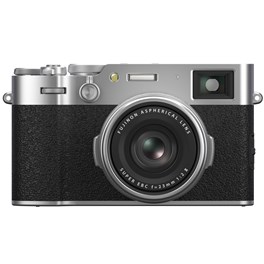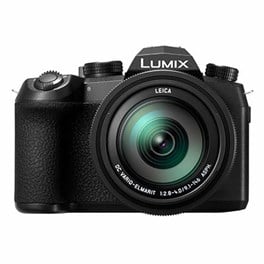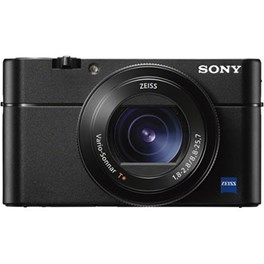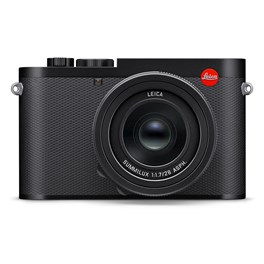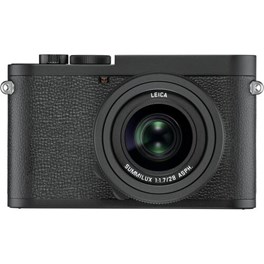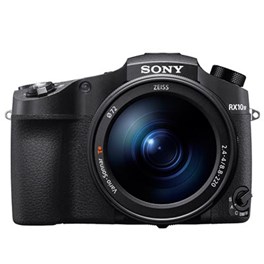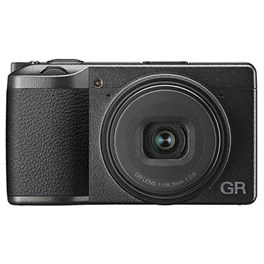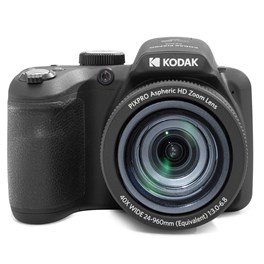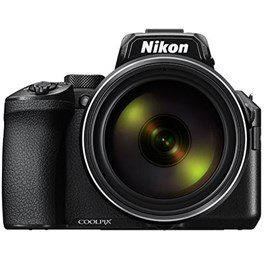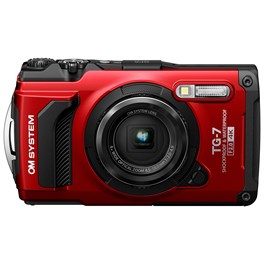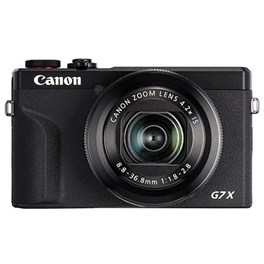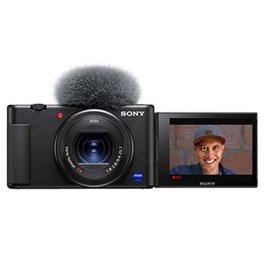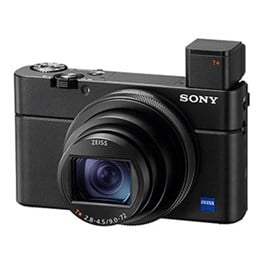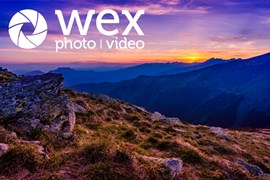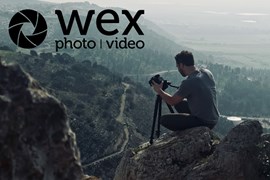
This guide is your one-stop shop for the best compact cameras you can buy right now – no matter your skill level or your budget. While interchangeable-lens cameras may hog the limelight, and smartphones may have a monopoly on convenience, for many photographers and videographers there is something special about the compact camera that they just can’t get anywhere else. And these days, compact cameras are far more sophisticated than they used to be, boasting high-resolution sensors, tack-sharp lenses and powerful processors.
But what do we mean by a “compact camera”, anyway? The term has nothing to do with size – a “compact camera” is defined as a camera that has a lens fixed to it, as opposed to mirrorless and DSLR cameras, which have lens mounts that allow lenses to be swapped out as the user pleases. If the technical terminology is all new to you, check out our photography jargon buster where we explain all this and more.
This definition allows for a lot of wiggle room. As you’ll see in this guide, compact cameras can and do look very different from one another. Some have a DSLR-style form factor, with a chunky handgrip and a powerful zoom lens. Others are slim and pocketable, using smaller prime lenses that can’t zoom in and out, but make up for it with dazzling sharpness. Some compact cameras have viewfinders; some don’t. Some have larger sensors than others, allowing them to create images with superior dynamic range and depth of tonality.
Finding the best compact camera for you is just about sussing out what you need and squaring that against your budget. The nice thing about compacts is that you don’t have to worry about holding cash back for lenses – everything you need to start shooting will be there in the box. We’ve included what we reckon are the best compact cameras you can buy, but we’ve been sure to add options for all budgets – which means we’ve got both new cameras, and models that have stood the test of time. So, let’s get into it.
Quick Navigation
Best Compact Cameras With a Viewfinder
Not all compact cameras come with a viewfinder, relying on the LCD screen for composition. If you’re the type who prefers to compose images with something against your eye, we pick some of the best compacts with viewfinders around right now. These all use electronic viewfinders or EVFs – these used to be low-quality, but now are highly responsive and boast bags of resolution. Some photographers even prefer EVFs to optical finders, as they allow for the displaying of shooting information!
When manufacturers are looking to cut down on the size and price of a compact camera, often one of the first things they do is remove the viewfinder. This makes perfect sense – in the age of articulating LCD screens and lightning-fast Live View, many photographers, and particularly videographers, don’t use the viewfinder at all. However, some shooters simply can’t live without the immediacy of a viewfinder pressed up to their eye when shooting.
This section is for you guys. The compact cameras in this section all have fantastic electronic or hybrid viewfinders, with loads of resolution and rapid refresh rates. For immersing yourself in the moment of capturing the shot, there’s nothing better. And don’t worry – all these cameras shoot fantastic images, too, and with fast autofocus and generous sensor resolution, you can be confident that the images will look as good in a print as they do in the viewfinder.
Fujifilm X100VI Digital Camera - Silver
Fujifilm’s X100VI outshines its predecessor with an upgraded 40.2MP X-Trans CMOS 5 HR sensor and a rapid X-Processor 5 engine for standout imaging. The compact, portable body houses 6-stops IBIS, AI subject detection, and the latest AF algorithm for sharp, high-quality images on the go. Impressive 6.2K/30p video recording and the newest film simulation modes ensure creative and impactful results.
£1,599.00 View
Pros:
- A new 40MP sensor
- Greatly improved video
- In-body image stabilisation!
Cons:
- Fixed focal length
- It's more pricey than the X100V
I am sure that if the Fujifilm X100V was still available (it's since been discontinued because, let's face it, it was never in stock anyway) it would still be in the top cameras in this guide. But that is not the case. No, we have something better. The Fujifilm X100VI.
The X100VI sees a range of upgrades and improvements that solidify it as one of the very best compact cameras. With the same 40MP X-Trans CMOS 5 HR sensor and X-Processor 5 used in the X-T5, this model takes what we loved about the X100V and elevates it to the next level. This iteration has fitted with 6-stop IBIS (finally), impressive AI subject detection and the latest AF algorithm and that sensor-processor duo allows you to record 6.2K30P and 4K60P video.
It's safe to say that this is an outstandingly enjoyable camera to use. It’s the street photography camera of choice for loads of professional and enthusiast photographers, with many commenting that an X100 camera has been the tool that made them fall in love with taking pictures again. Its dial-led controls, super-sharp prime lens and best-in-class electronic viewfinder all add up to one of the best compact cameras around.
Panasonic LUMIX DC-FZ1000 II Digital Camera
The Lumix FZ1000 II is a powerful and versatile bridge camera, capable of high-quality photography as well as 4K video. Featuring an impressive 25-400mm LEICA F2.8-4.0 DC lens, sitting in front of a 20MP 1" sensor, powered by Lumix's Venus engine, the FZ1000 II can handle almost anything you can throw at it. A free angle 1240K dot adorns the rear of the camera, providing pristine optical feedback.
£749.00 View
Pros:
- Effective 5-axis stabilisation
- USB charging
- Deep, comfortable handgrip
Cons:
- Contrast-detect autofocus slower than rivals
- Prolonged viewfinder use drains battery faster
Panasonic’s “FZ” compacts are big, hefty bridge cameras that give the user a large zoom range for all-purpose shooting, and the Lumix FZ1000 II is one of our favourites. The equivalent zoom range of 25-400mm is paired with a high-quality 1-inch sensor boasting 20MP of resolution, meaning you can get great-looking images in the vast majority of shooting situations.
The viewfinder on the FZ1000 II is a high-resolution OLED model that provides excellent clarity and an intuitive shooting experience. One thing to be aware of is that the battery drains faster when you’re using the viewfinder as opposed to the tilting LCD screen – however, Panasonic has thoughtfully added USB charging to this camera. That means you can bring a generic power bank along to your shoots, and easily top the camera up when you’re not using it.
An effective 5-axis stabilisation system built into the FZ1000 II allows for the use of slower shutter speeds handheld – useful when the light gets low. All in all, this is a highly versatile compact camera, with an excellent viewfinder.
Sony Cyber-shot RX100 Mark VA Digital Camera
The Sony Cyber-shot RX100 Mark VA Digital Camera builds on the success of the RX100 V and includes a number of important and effective improvements. It features an updated processor allows for a very responsive face tracking autofocus and subject tracking. Not only this, but there is Sony's improved menu system and larger buffer to reduce lag time in the electronic viewfinder (EVF). Aside from these, the system has carried over some features from its predecessor, this includes, the 20.1MP 1"-type stacked CMOS sensor, 4K movie recording with full pixel readout without pixel binning, a Zeiss 24-70mm f/1.8-2.8 lens, on-sensor phase detection AF, and a burst rate of 24fps.
£799.00 View
Pros:
- Wide-aperture lens for low light
- Exceptionally fast autofocus
- Pocketable dimensions
Cons:
- Screen not touch-sensitive
- Menus can be fiddly
Sony’s RX100 line of compacts is now on its seventh iteration (which you’ll meet further down this list), but the cameras have proved so popular that plenty of them have remained in production even as new ones have come along. Some have even had mild refreshes of their own, as is the case with the Sony Cyber-shot RX100 Mark VA, a small but welcome update to the original RX100 Mark V.
You get a winning combination of a high-quality 20.1MP 1"-type stacked CMOS sensor together with a 24-70mm equivalent lens that boasts an f1.8-2.8 maximum aperture. Rare for a compact, an aperture this wide gives the user extra flexibility when light levels start to drop, and the fact that it’s Zeiss-made means you can be assured of its sharpness.
And let’s not forget the viewfinder! The Sony Cyber-shot RX100 Mark VA sports a pop-up electronic viewfinder, and thanks to the upgraded processor of this “Mark VA” version, it’s faster and more responsive than ever.
Best Full Frame Compact Cameras
Compact cameras tend to have sensors in smaller sizes than interchangeable-lens cameras – 1-inch and 1/2.3-inch sensors are most common, with premium compacts generally sporting larger APS-C sensors. However, some compacts at the highest end have full-frame sensors, and in terms of image quality, they are unrivalled.
Why might you want a full-frame sensor? Well, these physically larger imaging sensors are able to have larger photosites, which means it’s possible to cram more pixels onto the sensor without incurring image noise, especially at high ISOs. This makes full-frame cameras able to produce images of greater dynamic range, and means they are more capable of producing useable images in low light. Full frame cameras can also produce images with a narrower depth of field, making them particularly good for portraiture, where you want a nice sharp main subject against an aesthetically blurred background.
Full-frame compact cameras are not common, but you do have options. Here are our favourites.
Leica Q3 Digital Camera
As one of the most prestigious names in the industry, Leica continues to pioneer the market with the launch of the long-anticipated Q3. This classic, minimalist masterpiece features a new triple-resolution sensor (60MP/36MP/18MP), an upgraded Maestro IV processor, 8K 30 fps video, and an improved hybrid AF system with phase detection - delivering industry-leading imaging power in one compact body.
£5,300.00 View
Pros:
- Sublime quality from triple-resolution sensor
- Ultra-precise Hybrid autofocus
- Superb low-light performance
Cons:
- Undeniably expensive for a fixed-lens compact
- Screen only tilts rather than articulating
The latest and greatest in Leica’s line of full-frame fixed-lens compacts, the Lecia Q3 is possibly the greatest street photography camera ever made. It pairs a pin-sharp and optically stabilised Leica Summilux 28mm f1.7 ASPH lens with a full-frame sensor – but what’s really clever is the triple-resolution design. This allows you to shoot at 60MP, 36MP or 18MP, depending on whether you need to prioritise detail or card space.
The low-light performance of the Leica Q3 is absolutely unreal – you can push the ISO up to 100,000 and still get useable shots if you’re willing to work them a little in post-processing. The machining of the body and the handling of the camera is, of course, sublime – we’d expect no less. The Hybrid autofocus system, meanwhile, is super-fast and incredibly accurate, making use of phase-detection for added precision. And as if that weren’t enough, the Q3 can also handle 8K 30p video.
Leica Q2 Monochrom Digital Camera
The Leica Q2 Monochrom maintains many of the elements of the Q2 system but the 47.3MP full-frame sensor has been reengineered without a colour filter array or low-pass filter, resulting in exclusively black-and-white images with greater dynamic range, sharpness and detail. Other than changes to the sensor, the Q2 Monochrom body is accompanied by the same Maestro II Image Processor and fixed 28mm Summilux f/1.7 ASPH lens. Together, the lens and camera can still capture stunning images and beautiful 4K video footage. On the exterior, the Q2 Monochrom has had a monochrome make-over. Leica has given the camera matte black finish with grey and white engravings on the top plate and body. The Leica red dot has also been removed which with the monochrome look gives this camera a sleeker and more discreet finish.
£5,200.00 View
Pros:
- Unparalleled monochrome image quality
- Beautiful build quality
- Exceptional f1.7 lens
Cons:
- Limited video usefulness
- Rear screen is fixed
The Leica Q2 Monochrom is definitely not a camera for everyone. It’s essentially the same build and sensor/lens combination as the original Leica Q, except with one crucial difference – it has no colour filter array. That’s right, the Leica Q2 Monochrom, as the name implies, is only capable of capturing images in glorious, classically cool black and white.
And good lord do they look fantastic. The winningly sharp f1.7 Summilux lens delivers absolute crystal-clear quality from corner to corner, and the large full-frame sensor ensures tip-top dynamic range and tonality. It’s a camera for delivering a pure photographic experience, of losing yourself in the moment and being transported back to a simpler way of thinking. That’s not to say that the Q2 Monochrom doesn’t manage to fit in a few modern conveniences. It can hit a maximum ISO setting of 100,000 and still produce useable images, and it has an effective stabilisation system. It can even shoot 4K video!
Best Compact Cameras for Image Quality
Compact cameras used to be synonymous with cheapness and poor-quality imagery – but this is no longer the case. These days, as we’ve already seen, compact cameras are capable of capturing stunning imagery in all sorts of shooting situations, even when handling low-light or fast action.
Opting for the convenience of a compact camera no longer means severely compromising image quality, as the models we’ve selected for this section demonstrate. With top-quality sensors, ultra-sharp lenses and advanced processing systems, these compact cameras are capable of producing image quality to a professional standard, no matter what you want to photograph. Any of the full-frame cameras we included in the previous section could have fit in here too, but those high-ticket shooters sit at the top end of the market. Here, we’ve gone for cameras accessible to more users, with different budgets and shooting needs.
Sony Cyber-Shot RX10 IV Digital Camera
£200 Cashback
The Sony Cyber-Shot RX10 is the 4th iteration of Sony's widely popular RX10 series. It boasts an industry leading autofocus speed of just 0.03 seconds, a fixed Zeiss Vario-Sonnar T* 24-600mm lens, and 4K internal video recording. All of that and the the RX10 IV also packs a powerful 20.1MP 1.0-type sensor. Fast processing speeds also allow for the camera to achieve 24fps continuous shooting and super slow-motion up to 1000fps. The RX10 IV really do have a full arsenal of features!
£1,499.00 View
Pros:
- High lens quality throughout zoom range
- Pin-sharp close-up modes
- Incredible 0.03sec AF acquisition time
Cons:
- Bulky for a compact
The raison d'être of Sony’s RX10 series, ever since the first iteration in 2014, has been to challenge the idea that a superzoom camera needs to have sub-par image quality. The Sony Cyber-Shot RX10 IV continues in that fine tradition, pairing a fixed Zeiss Vario-Sonnar T* 24-600mm lens with a 20.1MP 1-inch Exmor RS CMOS sensor. It’s arguably unrivalled in the world of compact cameras for its ability to nail pretty much any shot you can think of – this is helped along by some of the fastest autofocus in the business, with focus acquisition times as quick as 0.03sec.
All this technology – digital and optical – requires some physical space, and the Sony RX10 IV is pretty chunky and hefty for a compact camera. Still, it’s a camera you could happily use for a lifetime of shoots and rarely find there’s something it can’t capture in dazzlingly high quality. And who can argue with that?
Ricoh GR III Digital Camera
The Ricoh GR-III comes as a welcome addition to the Ricoh ecosystem. It features a large 24.24-megapixel sensor with a new powerful GR ENGINE 6. The compact system also has a wide-angle 18.3mm f2.8 lens which is capable of producing some stunning imagery. There have been some major improvements from the previous GR-II, including a faster autofocus system, shake reduction mechanism and a touch-operated LCD screen. This camera has a non-invasive design making it the perfect street and/or architectural photography camera.
£949.00 View
Pros:
- Slips into a pocket
- Superb prime lens
Cons:
- Limited battery life
- Viewfinder is an optional extra
A chic, lightweight street-photography camera with a fixed prime lens and a large sensor. Effectively a more affordable version of the X100V, the Ricoh GR III is a fantastic take-everywhere camera.
While it doesn’t have a zoom lens, the Ricoh GR III is a svelte and sophisticated camera with lots of its own advantages. Its high-quality prime lens, which provides an equivalent focal length of 28mm, is a fantastic option for street shots and everyday moments when you’re facing the unpredictable. Plus, the 24.24MP APS-C sensor means the GR III produces high-quality images in all sorts of lighting conditions, with generous dynamic range.
A firmware update in 2020 further upgraded the Ricoh GR III’s performance, enhancing it into the kind of capable, dependable street camera that travel photographers love. With a lightning fast start-up time of around 0.8secs, the GR III can be ready to shoot at a moment’s notice, ensuring you’ll never miss the crucial moment, no matter where your travels take you. It’s also available as a special Ricoh GR III Street Edition, which has distinctive orange-yellow styling and includes a case and an extra battery. And, if you prefer a longer focal length, there’s the Ricoh GR IIIx, which is essentially identical except that it uses a 40mm equivalent lens rather than a 28mm.
Best Compact Cameras With a Zoom
The fixed lens of a compact camera doesn't have to mean you’re stuck with a single perspective! Many compact cameras boast powerful zoom lenses that can capture high-quality images at a huge range of focal lengths. And “zoom” doesn’t have to mean “superzoom”, as there are plenty of compact cameras with zoom lenses that cover a more modest focal range, but do it with superior optical quality. As with any camera decision, it’s all about figuring out what best suits you and your image-making.
The compact cameras with a zoom we’ve picked for this section are a mixture of big-zoom bridge cameras and smaller zoom compacts that are perfect for travel. Which type is best for you depends largely on how much weight you’re up for carrying around all day, as well as how long a zoom you realistically need.
Kodak Pixpro AZ405 Digital Camera - Black
Bring your subject closer with the Kodak Pixpro AZ405 Digital Camera - Black, featuring an impressive 40x optical zoom in a compact body. With 20 megapixel resolution and a 24mm wide-angle lens, you can capture the whole scene in stunning clarity. Recording 1080p full HD video with a vibrant 3-inch LCD screen to view your shots, it’s a powerful, versatile choice for getting the perfect shot.
£199.00 View
Pros:
- Super-affordable asking price
- 40x optical zoom
- Optical stabilisation
Cons:
- No built-in rechargeable battery
- No touchscreen
We thought manufacturers weren’t making these kinds of big-zoom bridge cameras any more – but then, in 2023, the Kodak PixPro brand came roaring into life with a clutch of new cameras, including this ultra-cheap big-zoom compact. The Kodak Pixpro AZ405 gives you a DSLR-style body and a big, healthy 40x zoom lens for a two-figure asking price, and that is quite a proposition for anyone who wants a zoom compact on a budget.
The lens runs from an equivalent of 24mm all the way up to an equivalent of 960mm, with optical stabilisation to help keep that tele end practical to use. The sensor is a smaller 1/2.3-inch type, meaning that image quality is about on par with what you’d expect from a point-and-shoot. But the grippable form factor and relatively tidy dimensions of the Pixpro AZ405 make it a winner for holidays and other travel. Be aware that it doesn’t have its own Li-Ion battery and instead relies on standard AAs – our advice if you’re planning to use the camera a lot is to invest in some rechargeables.
Panasonic Lumix DMC-FZ2000 Digital Camera
The Panasonic Lumix DMC-FZ2000 is a highly regarded bridge camera that offers a huge amount of features and quality to its user. It has a large and sensitive 1-inch MOS sensor capable of capturing super sharp images in all lighting conditions. It also has an impressive 20x optical zoom and the ability to capture stunning 4K video in MOV/MP4 formats that makes it suitable for photographers and videographers alike. The lens itself has been built with Leica glass components and in 35mm terms is equivalent to a 24-480mm lens. It's been constructed out of 16 elements in 11 groups and the f/2.8-4.5 aperture delivers a high-quality optical performance with little ghosting.
£899.00 View
Pros:
- 20x optical zoom
- Can shoot macro at 3cm
- Impressive high-spec video modes
Cons:
- May not be worth it for stills purists
- Relatively heavy
Panasonic has always excelled at blending stills and video features to create dazzling hybrid cameras, and the Lumix DMC-FZ2000 is no exception. This is an outstanding compact camera, similar in a lot of ways to Sony’s RZ10 series, combining a big zoom lens with a high-quality 1-inch MOS sensor. However, the FZ2000 also throws in a lot of high-spec video features inherited from Panasonic’s GH series – it shoots Cinema and UHD 4K, and through its HDMI port it can output 4:2:2 10-bit video.
All this video tech means that those who are interested in photography only can probably get better value for money from one of the other cameras on this list. However, the FZ2000 has clearly been designed to be a credible compact camera for filmmakers, and that means its 24-480mm equivalent Leica Vario-Elmarit zoom lens is one of the best in class.
Nikon Coolpix P950 Digital Camera
The COOLPIX P950 is another great addition to Nikon's line-up of bridge cameras that are a great companion for wildlife or bird photographers and aircraft spotters. This durable, superzoom camera offers an impressive 83x optical zoom and is a worthy upgrade to the COOLPIX P900, featuring sought-after functions. These include a bright f/2.8 NIKKOR lens; 4K video recording; RAW image capture and a full-size hot shoe for mounting of Nikon accessories. The COOLPIX P950 has everything you need to capture distant subjects with outstanding detail; whether it is a close-up photograph or a crystal-clear 4K video.
£849.00 View
Pros:
- Incredible zoom range
- Effective stabilisation system
Cons:
- Older sensor
- Focus hunts at extreme telephoto
Sometimes, you just have to take a second to appreciate how far camera and lens technology has come. The Nikon Coolpix P950 is an incredible superzoom camera, with a lens that covers an equivalent focal range of 24-2000mm. That’s an 83x zoom! In practical terms, that’s enough to capture good-quality images of the craters on the moon.
Thanks to the effective stabilisation system built into the Nikon Coolpix P950, the extreme telephoto lens is also usable without a tripod. It has an excellent OLED electronic viewfinder as well, and a reassuringly sturdy DSLR-like build. Few other compact cameras can even come close to matching the long-range capabilities of the Nikon Coolpix P950. Even DSLRs and mirrorless cameras with their selections of zoom lenses will have trouble keeping up.
Best Pocket-Sized Compact Cameras
Portability is one of the greatest strengths of compacts, so we’d be remiss if we didn’t pick out the best pocket-sized compact cameras. We’re saying goodbye to enormous bridge cameras with their chunky zooms and DSLR-style bodies – the cameras in this section are ones to slip into a pocket or small bag and take everywhere with you.
As you might imagine, pocket-sized compacts are ideal for travel. This means a zoom lens can be useful, to give yourself maximum flexibility, and it can also be a bonus to have a tough and waterproof camera body that’s capable of standing up to the elements. With smaller compacts you do have to accept a few compromises – they often have quite short battery life, so it’s a good idea to pack a few spares and an extra charger or two.
But as they say, the best camera is the one you have with you – so here are some cameras you can always have with you.
OM SYSTEM Tough TG-7 Digital Camera - Red
Venture further, dive deeper, and unveil more detail with OM SYSTEM’s Tough TG-7 12MP digital camera. Lightweight, compact, and rugged enough for outdoor enthusiasts, the TG-7 is waterproof to an impressive depth of 15m, shockproof to 2.1m, crushproof up to 100kg, and freezeproof at -10°C. It also boasts 4K video, an f2 wide 25-100mm 4x optical zoom lens, and a 12-megapixel backlit CMOS sensor.
£499.00 View
Pros:
- Ultra-tough waterproof chassis
- Optical zoom lens with f2 maximum aperture
- Great for close-ups with macro modes
Cons:
- Smaller sensor than other compacts
As OM System continues to update and expand on the Olympus range of cameras, the Tough TG-7 represents the latest iteration of one of the best waterproof compact series around. With a 25-100mm equivalent zoom lens that boasts an f2 maximum aperture, the TG-7 is much more versatile than other tough compacts, both in terms of its low-light performance and its ability to photograph distant subjects.
But you don’t always need to stay at a distance. The Tough TG-7 is highly capable when it comes to close-ups and macro – again, much more so than rival tough compacts – with a number of dedicated shooting modes that are optimised for shooting as close as 1cm away from a subject. It also offers in-camera Focus Stacking, meaning you can merge together three to ten frames with different focal points for an image that is front-to-back in focus. And for video, the TG-7 supports 4K 30p, or can shoot slow-motion up to 480 frames per second in standard definition.
Pros:
- Extremely small and pocketable
- Good in low light
Cons:
- No mic socket
- Slim battery life
It may be incredibly slim and portable, but the Canon PowerShot G5 X Mark II has got imaging tech where it counts. Its 5x zoom lens has a maximum aperture of f1.8-2.8, which is fantastic for low light, and the burst mode can rattle off RAW images at 30fps for capturing ultra-fast action. This is in part thanks to the design of its 20.1MP 1-inch sensor, which is a stacked type for increased readout speeds.
The G5 X Mark II is also highly capable for video. It can shoot great-looking 4K, but it’s also worth noting that if you drop the resolution down to Full HD, it can shoot at a maximum frame rate of 120p – great for slow motion. There’s no mic socket, meaning you’ll need to rely on built-in mics, and it’s probably worth packing a spare battery and charger, but otherwise, this is a fantastic pocket-sized compact.
Canon PowerShot Zoom Essential Kit - White
This pocket-size super zoom camera offers an expansive 100mm or 400mm focal length, as well as a 2x digital zoom to expand the range to an incredible 800mm. With the capacity to record full-HD video and 12.1 MP still-images, the Canon PowerShot Zoom is ideal for outdoor adventures, wildlife enthusiasts, bird watchers, and family days out. Implements key image stabilisation and USB charging.
£289.00 View
Pros:
- Amazingly small – just 145g!
- Powerful zoom optics
- Quick USB charging
Cons:
- No LCD screen
- Not compatible with standard 5V chargers
It may not look much like a camera at all at first glance, but the Canon PowerShot Zoom is an impressive little compact with powerful optical capabilities. It counts among its fans the naturalist Chris Packham, and indeed, it’s a great choice for bird-watching, especially with family. The diminutive design and simple operation mean it's easy for a child to get to grips with, while the bright and clear electronic viewfinder makes for a pleasing viewing experience.
The zoom works in a three-stage system, toggling between 100mm, 400mm and 800mm settings (the last one is aided by digital zoom). The camera can capture 12.1MP stills or Full HD video, and has built-in mics to capture the ambient audio as well. A 4-axis optical stabiliser also helps keep the view steady when using the longer zoom settings. For walks in the woods and family outings, the Canon PowerShot Zoom is a great choice.
Best 4K Compact Cameras
Compact cameras have come into their own as tools for vlogging and YouTube video creators. As 4K video has been adopted across the board, to the point where it’s expected as a minimum on practically any new camera that comes out, video shooters who want an agile setup that’s as capable for locked-off pieces to camera as it is for run-and-gun shoots.
That’s where the best 4K compact cameras come into their own. Flexible and capable, these video shooters have quality where it counts, delivering a suite of flexible video options, with the capacity to add extra accessories such as an external microphone. While the majority of the compact cameras on our list already do shoot 4K, here we’ve picked a few suggestions that are truly optimised for video creators. With capable video AF, articulating screens and exceptional 4K quality, these compact cameras are ideal for any budding YouTuber or vlogger to get out there and get shooting.
Canon PowerShot G7 X Mark III Digital Camera - Black
Save £50, Was £749
The Canon PowerShot G7 X Mark III allows users to create content that defies expectations and surpasses what you're used to seeing from your smartphone. Incredible 4K video, sumptuous 20.1-megapixel photos and high-speed shooting that stops fleeting moments in time. Please note: This is the black version of this camera.
£699.00 View
Pros:
- Crisp 4K quality
- Handy 3.5m mic input
- Live streaming option
Cons:
- 4.2x zoom range is a little short
Canon’s first two PowerShot G7 X cameras proved to be a hit with YouTubers, and so the Mark II version leant into it. The Canon PowerShot G7 X Mark III is not just capable of producing crisp 4K and stunning Full HD (though it most assuredly is), it also has live YouTube streaming support built in. This makes it a hugely compelling option for the contemporary video creator.
Of course, the imaging basics haven’t been forgotten. The G7 X Mark III pairs a new 20.1MP stacked CMOS sensor and an upgraded DIGIC 8 processor, and also adds in plenty of useful extra features like the option for vertical video capture, a built-in ND filter, a 30 fps Raw burst mode and more. It’s actually quite a substantial upgrade over the Mark II version, even if the cameras look outwardly similar. For any video creator looking for something portable and capable, it’s an outstanding option.
Sony Vlog ZV-1 Digital Camera
Designed for modern vloggers or anyone looking for a simple, all-in-one solution for content creation, the Sony Vlog ZV-1 provides professional image quality in a pocket-sized body. The camera is powered by a 1.0-type stacked Exmor RS CMOS image sensor with integral DRAM, enabling a variety of serious video capabilities, including 4K and Super Slow Motion. As of February 2021, a new software update has become available for you to use the ZV-1 camera as a high-quality video and audio camera. As well as this, you can now live stream from your ZV-1 via a simple USB cable connection. Start by connecting your camera with UVC/UAC over a USB cable to a PC, giving you access to live streaming and online communication. Alternatively, connect your ZV-1 to a Sony Xperia smartphone for on-the-go live streaming - Xperia 1 II or Xperia 5 II upgraded to Android 11.
£649.00 View
Pros:
- Optimised for vlogging
- Autofocus is excellent
Cons:
- Limited zoom range
- Very video-oriented
While many compact cameras offer video as a handy extra, the Sony ZV-1 is very much centred around it. It’s a vlogging camera first and foremost, designed around a combination of a 20MP 1-inch sensor and 24-70mm equivalent f1.8-2.8 zoom lens. Its ergonomics are optimised for vloggers, and it comes with a useful wind shield for its onboard microphone.
While the ZV-1 does shoot stills, there are definitely better choices out there at the same price point for pure stills shooters. The 4K UHD video looks fantastic – beautifully crisp – and the handling is generally very good, with a useful touchscreen. Autofocus is exceptional on the ZV-1 as well.
#Sony Cyber-Shot RX100 VII Digital Camera
The RX100 VII from Sony is an ideal point-and-shoot camera for serious photographers. Featuring a 1.0-type stacked 20.1MP Exmor RS CMOS sensor, a 24-200mm f/2.8-4.5 Zeiss Vario-Tessar fixed lens, and a single burst shooting drive mode that allows users to capture up to 90 sequential images per second. Video users are also catered for with the RX100 VII featuring 4K and HDR video, with Real-Time Tracking and Real-Time Eye AF. 257-point focal-plane phase-detection AF points, and 425-point contrast AF make it the fastest performing autofocus system in the world for a camera of its type.
£1,049.00 View
Pros:
- Class-leading image quality
- Autofocus is superb
Cons:
- Very small – can be fiddly
- Aperture tops out at f2.8
The latest and greatest in Sony’s hugely popular RX100 line. The Sony RX100 Mark VII blends a long zoom lens with a high-resolution sensor and a slim body. This is what a point-and-shoot camera for professionals looks like.
It’s just incredible how much Sony managed to pack into this camera. The 20.1MP Exmor RS CMOS 1-inch sensor is, of course, excellent, and just by itself would be enough to produce some of the best image quality from any compact camera around. But then that’s also paired with a Zeiss-made 24-200mm f2.8-4.5 lens for tremendous versatility. And then you’ve got the ability to burst shoot at up to 20fps with no viewfinder blackout, alongside an autofocus system capable of making up to 60 tracking calculations every second. Of course, that isn’t the fastest the camera can shoot – its Single Burst Shooting’ Drive Mode can get up to 90fps!
The RX100 VII is highly optimised for video, producing pristine 4K footage with full pixel readout. It can shoot in the S-Log3 gamma profile for a flat image, and produce super-slow-motion at up to 1000fps. Without a doubt, this is one of the most technologically advanced compact cameras ever made, able to stand shoulder-to-shoulder with professional DSLRs and mirrorless machines.

What is a compact system camera?
A compact system camera, or CSC, is a type of digital camera that combines the portability of a point-and-shoot camera with the advanced features of a DSLR or mirrorless camera.
Why would I choose a compact camera over a DSLR or Mirrorless?
Compact cameras offer advantages such as portability, versatility with interchangeable lenses, and high image quality. They are suitable for both amateur and professional photographers, providing a balance between convenience and advanced features. Of course, while they have these benefits, they can’t offer the level of quality a DSLR or mirrorless offers.
Are compact system cameras suitable for professional photographers?
Yes, many professional photographers use compact cameras for convenience, portability, and excellent image quality. However, the suitability depends on the specific requirements of the photographer and the type of photography they shoot.
Do compact cameras shoot decent video?
By all means! Many compact cameras offer exceptional video quality with features like 4K, advanced autofocus, and in-body image stabilisation.
Can I use external flashes with compact system cameras?
Yes, most compact cameras have a hot shoe for attaching external flashes.
Are compact system cameras suitable for beginners?
Yes, compact cameras are great for beginners and simply for capturing life around you e.g. family life, holidays and more. They allow you to learn and grow in photography without the bulk and complexity of other cameras such as higher-level DSLRs or mirrorless cameras.
View our full range of compact cameras »
How do we decide?
Our in-house photography experts, store staff and partners all work collaboratively to pour over these guides. The cameras and equipment recommended in our guides are based on their personal opinion, empirical experience and of course, feedback from our customers.
We way up price, features, quality and the all-important 'je ne sais quoi' to make sure we recommend products that will delight and inspire.
If you would like more advice on any purchase our contact centre staff are here to help. Alternatively, you can reach us via email or social media.
And don't forget. If you were to purchase anything based on our recommendations you'll be covered by our full returns policy
Buying Guides

